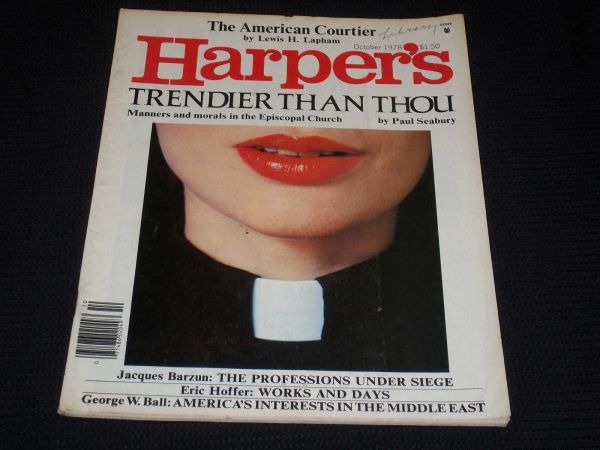Why the Episcopal Church Split
I live in Charleston, South Carolina. In 2012, most of the Episcopal Churches in Charleston chose to leave the Episcopal Church and join The Anglican Church of North America. You could easily spend a few days in a library going through the range of opinions on this subject, tracing each step in the process of the Episcopal Church's near-dissolution.
The leadership in the Episcopal Church let the underlying issues in the dissolution smolder for years before anyone did anything about it. For a starting point, my reader shoulld take the time to read an article in the October, 1978, issue of Harpers Magazine, titled "Trendier than Thou". It describes the early years of the conflict, as the increasingly high-handed decisions made by the Left-leaning Episcopal Chruch leadership alienated traditional Christians and kicked off their discussions about leaving. They only had to find a place to go. My reader can find this article on-line.
Paul Seabury, the author of "Trendier Than Thou", descends from the first American-born bishop of the Church of England, Samuel Seabury, chosen for this post in 1783. He faced the kind of conflict that later Episcopalians have faced, whether to remain a loyal subject of the status quo or to join the rebels. Bishop Seabury never quite resolved his own conflict. He remained loyal to the Crown but chose burial in the U.S.
I have seen Episcopal prayer books published before the American Revolution, that show how the victorious rebels crossed out prayerful references to "King" and "Queen", and scrawled "President" over them. So the American Episcopal Church grew out of the Church of England, as the thirteen British Colonies transitioned into The United States of America.
In "Trendier Than Thou", Paul Seabury writes that traditional Christians resented the Left-leaning agenda forced onto them by their leaders, so many of them started considering ways to resolve the conflict, such as joining the more traditional Anglican Church of North America. The secession movement snowballed, and in 2012, many Episcopal parishes risked everything and formally broke with the Episcopal Church.
I could go into detail about the reasons for the split, but I won't bore my readers with them. I'll just quote from Paul Seabury's 13-page "Trendier Than Thou" article:
-1. Barbara Walters interviewed the first woman ordained as a priest. . . . "Reverend (Jaqueline) Means, do you consider yourself a woman of strong faith?" "No, Barbara. I do not, but I do believe in caring, and that's what religion is all about, isn't it?"
-2. By the late 1960s, national church authorities were dispensing millions of dollars of missionary funds, collected from parishes and dioceses, to radical political movements . . . Black Power groups, migrant farm-workers, Marxist documentary-film producers, and Third World liberation movements.
-3. The paternalistic enthusiasm of these Episcopalian benefactors inspired contempt in their recipients. In 1969, when the Church-in-Convention . . . voted funds for a radical Black Economic Development Council, Mohammed Kenyatta seized the microphone to amplify his contempt:
For the first time in history, you have faced the issue of your racism. . . . You have sought
what was acceptable to us. . . . You chose us to be your middlemen. That is your choice,
and it is unacceptable. . . . It is neither hot nor cold.
-4. Only when the IRS warned that church levies for such programs would jeopardize its tax-exempt status did the Presiding Bishop (John Hines) back down.
-5. As good a place as any to observe this reformation (the left-leaning leadership) is in its great cathedrals. . . . With the Bishop's (Paul Moore) moral and financial support, militant Puerto Rican squatters in 1970 occupied church-owned tenements. . . .
-6. The Cathedral (of Saint John the Divine) makes itself available for light shows, Shinto rites, Sufi workshops in Dervish dancing. . . .
-7. Dotson Rader, once of the SDS (Students for Democratic Action, 1960s radical student group) has described in Esquire his thrill at persuading Bishop Moore to use the cathedral for a huge anti-war ceremony organized by anti-Trotskyite Marxists. . . . Rader was thrilled by the bizarre sight of Andy Warhol . . . and the kids smoking pot. In Church! "It's just like the Dom!" (a discotheque in New York)
The proud old Episcopal Church has experienced declining membership, perhaps since the 1960s, even without the defections to other denominations. At the root of it, in my opinion, is the retreat from the Church's traditional functions—collective worship, prayer, and singing, and ceremonies that mark the stages in a person's life. Without these, the Church loses focus.

